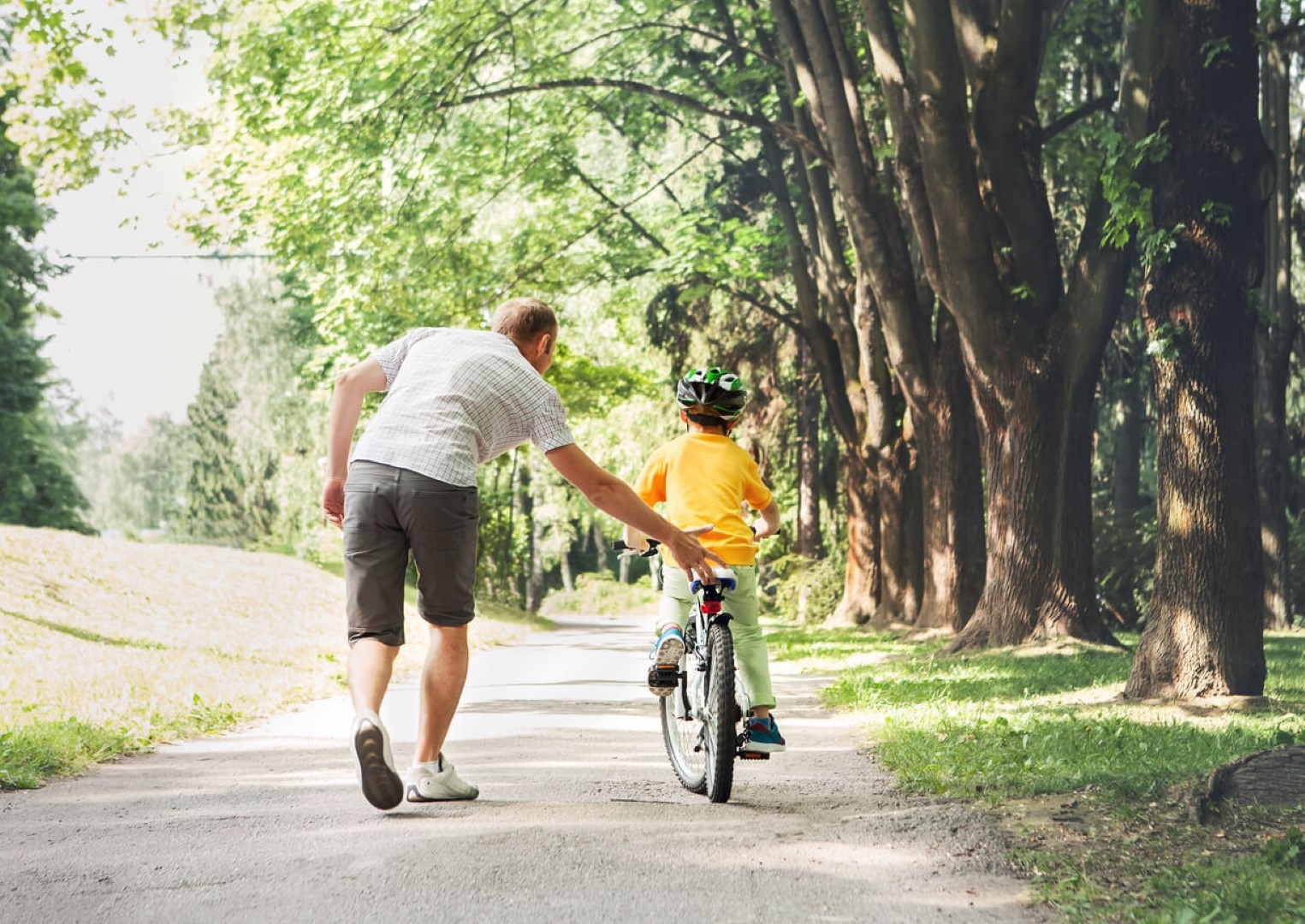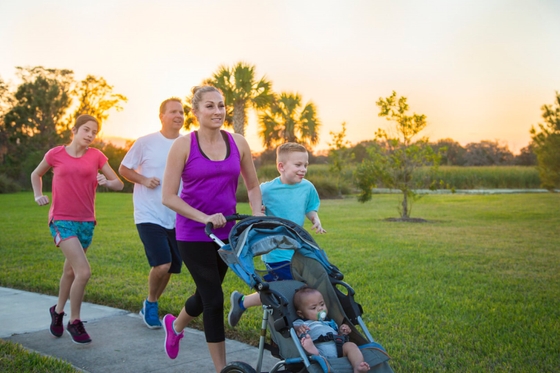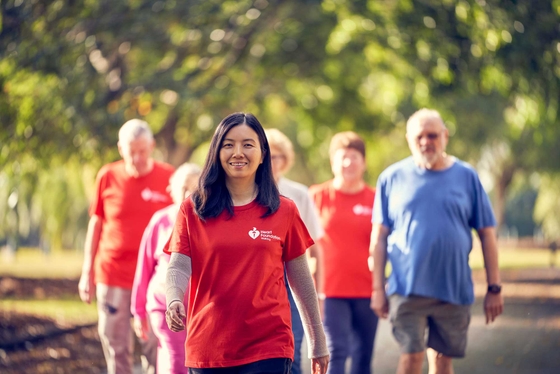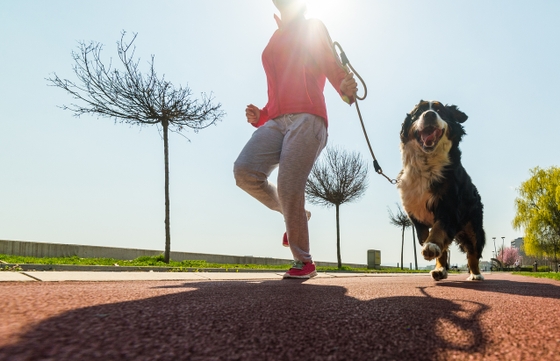
Staying active for better heart health
Moving more every day is one of the best habits you can have.
- Live your best life by getting into the habit of being active – you’ll enjoy the benefits for the rest of your life
- Not sure how much to do? Check out the Australian Physical Activity Guidelines (below) which differ by age group.
- If you’ve already reached the recommended 30 minutes of activity a day for adults, try gradually building your minutes and/or intensity for even more benefits.
- Stay active year-round. Mix up your activity between indoors and outdoors to be ready for any weather.
Regular physical activity strengthens your muscles, builds stronger bones and makes you feel better about yourself. It makes you less likely to have a heart attack or develop heart disease.
You can start at any age and feel the benefits for the rest of your life. If you’re a parent or carer of children, getting more active sets a great example and helps create healthy habits.
Are you doing your 30 minutes a day?
If you are that’s great. You can make your heart health even better by picking up the pace. Try gradually increasing the amount you spend being physically active, or exercise intensity. You’ll feel great and see longer-term health benefits, too.
If you aren’t, you’re not alone. More than half of all Australians aren’t active enough. Start slowly and gradually increase your physical activity. Consult your doctor for advice on the best exercises for you.
Aim for 150 minutes (2.5 hours) of moderate physical activity each week or 75 minutes (1 ¼ hours) of vigorous exercise. ‘Vigorous’ exercise requires more effort and makes you breathe harder and faster, for example, jogging. Moderate and vigorous physical activity can help improve heart health, blood pressure, cholesterol, muscle and bone strength.
How to get active
How to be active at any age
Depending on your age, you’ll have different physical activity requirements.
| Children aged under 5 years |
|
| Children and young people aged 5 to 17-years old |
|
| Adults aged 18 to 64-years old |
|
| Adults aged 65 years and older |
|
Ways to stay active year-round
| Make getting fit enjoyable |
|
| Choose activities that suit your lifestyle |
|
| Check out local exercise options |
|
| Walk wherever and whenever to easily stay active |
|
| Plan for bad weather |
|
| Keep some exercise equipment at home |
|
| Have fun getting physical |
|
| Get active around the house |
|
| Take every opportunity to move your body every day |
|
| Make physical activity part of family time |
|
Top tips for active travel
Look for opportunities to avoid sitting in traffic when going to work, school or heading out for a get-together. With extensive public transport systems – including bus networks, numerous cycle paths, bike and park facilities -it's never been easier to take the first step towards an active lifestyle. Combining different forms of transport will help you meet your daily physical activity requirements.
Active travel to school or part of the way
Walking, cycling or scooting with your children to school is a great way to incorporate physical activity into your day and help make everyone more productive for the day ahead. You may be able to get to work and back home this way, too.
Park and pedal
Park your car for free in the suburbs and pedal your bike for the rest of your journey. Cycling allows you to incorporate physical activity into your daily routine.
Walk or ride to local destinations
This is not only good for your health but also a great way to connect with your community. Living within walking distance of shops, parks, public transport stops and having accessible bike paths makes it much easier to get the physical activity we need every day.
Have walking meetings in the workplace
Walking the talk is an easy way to add some activity time to your day. Make sure you also take regular breaks from your computer and use meetings as a chance to stand up and reduce your sitting time. Try standing at the back of the room during presentations.
Get active and social
Have fun with friends, families or neighbours and add an activity to your get-togethers. Street or park festivals and community walks or runs are just some of the ways to combine moving more and connecting with others.
- Join a Heart Foundation Walking Group.
- Download a free Personal Walking Plan
- Go on outings that encourage walking, such as visiting the zoo, botanical gardens, national parks, theme parks, expos or historic sites
- Visit your local park and take a picnic with friends and family
- Discover your local walking tracks
- Meet up with friends to do activities, such as bowling, bike riding, tennis, rock climbing, dancing, swimming and bushwalking
- Join a community class, such as dancing, tai chi and yoga
- Go camping for your next holiday
- Try a new activity – dancing, skipping, rollerblading, frisbee, hula hoop, beach cricket, volleyball – anything that takes your fancy!
- Form your own sports team with friends or colleagues or join an existing club.
You might also be interested in...

Get your family moving
Get your kids active and set them up for healthier habits into adulthood.

Heart Foundation Walking
Our program is Australia’s largest free walking network, and offers Australians multiple ways to walk with us.

Get started with more physical activity
Finding time for physical activity and exercise is one of the best things you can do for your heart.
Last updated10 December 2024
Last reviewed10 March 2024